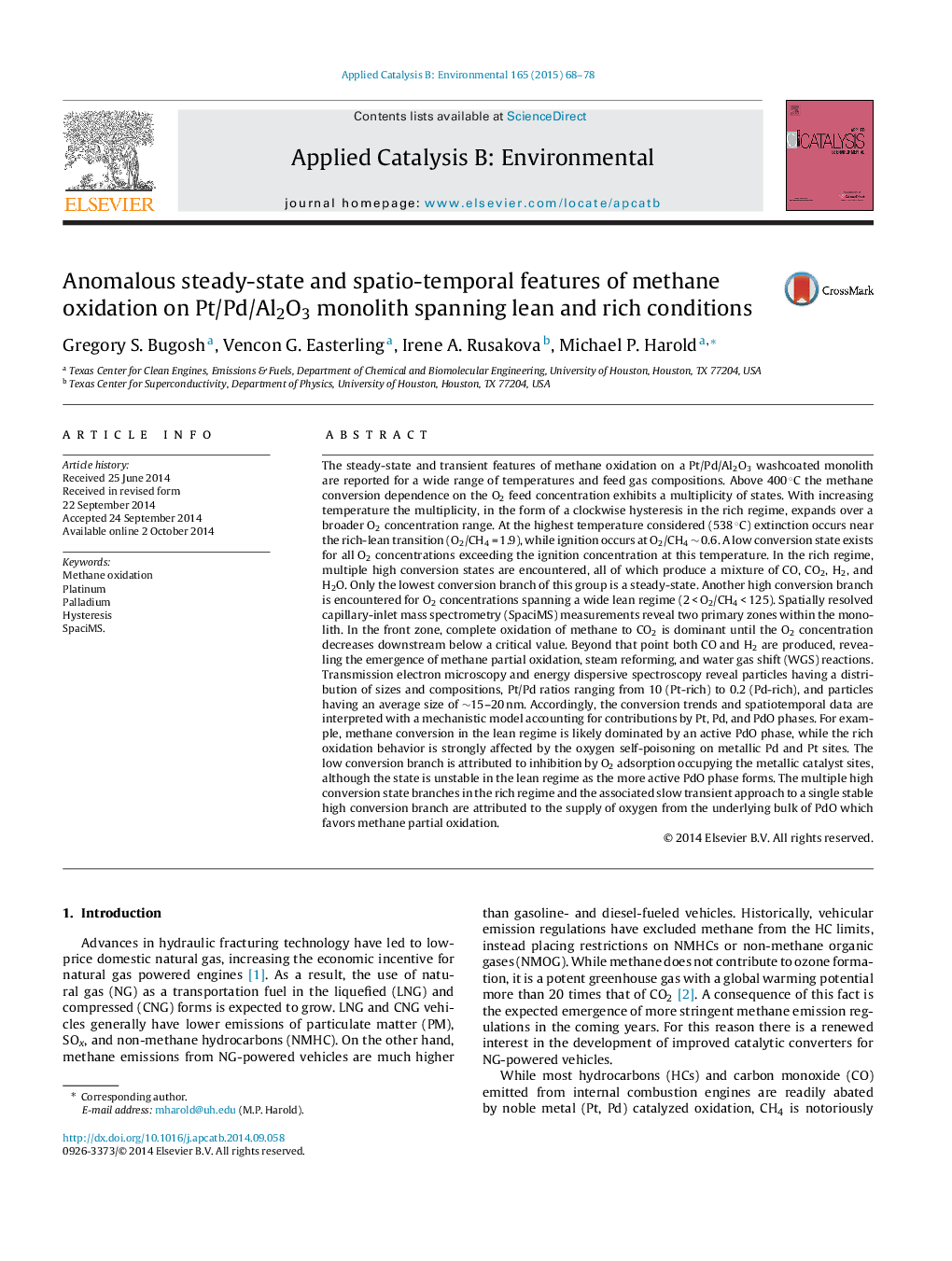| Article ID | Journal | Published Year | Pages | File Type |
|---|---|---|---|---|
| 45535 | Applied Catalysis B: Environmental | 2015 | 11 Pages |
•CH4 conversion exhibits multiple states spanning lean and rich feed regimes.•TEM-EDS reveals population of Pt-rich, Pd-rich and equimolar PtPd particles.•Multiple transient states in rich regime attributed to oxygen supplied from PdO.•Spatially resolved measurements reveal sequential production of CO2 and CO.•Evidence for CH4 conversion by complete oxidation, partial oxidation, and reforming.
The steady-state and transient features of methane oxidation on a Pt/Pd/Al2O3 washcoated monolith are reported for a wide range of temperatures and feed gas compositions. Above 400 °C the methane conversion dependence on the O2 feed concentration exhibits a multiplicity of states. With increasing temperature the multiplicity, in the form of a clockwise hysteresis in the rich regime, expands over a broader O2 concentration range. At the highest temperature considered (538 °C) extinction occurs near the rich-lean transition (O2/CH4 = 1.9), while ignition occurs at O2/CH4 ∼ 0.6. A low conversion state exists for all O2 concentrations exceeding the ignition concentration at this temperature. In the rich regime, multiple high conversion states are encountered, all of which produce a mixture of CO, CO2, H2, and H2O. Only the lowest conversion branch of this group is a steady-state. Another high conversion branch is encountered for O2 concentrations spanning a wide lean regime (2 < O2/CH4 < 125). Spatially resolved capillary-inlet mass spectrometry (SpaciMS) measurements reveal two primary zones within the monolith. In the front zone, complete oxidation of methane to CO2 is dominant until the O2 concentration decreases downstream below a critical value. Beyond that point both CO and H2 are produced, revealing the emergence of methane partial oxidation, steam reforming, and water gas shift (WGS) reactions. Transmission electron microscopy and energy dispersive spectroscopy reveal particles having a distribution of sizes and compositions, Pt/Pd ratios ranging from 10 (Pt-rich) to 0.2 (Pd-rich), and particles having an average size of ∼15–20 nm. Accordingly, the conversion trends and spatiotemporal data are interpreted with a mechanistic model accounting for contributions by Pt, Pd, and PdO phases. For example, methane conversion in the lean regime is likely dominated by an active PdO phase, while the rich oxidation behavior is strongly affected by the oxygen self-poisoning on metallic Pd and Pt sites. The low conversion branch is attributed to inhibition by O2 adsorption occupying the metallic catalyst sites, although the state is unstable in the lean regime as the more active PdO phase forms. The multiple high conversion state branches in the rich regime and the associated slow transient approach to a single stable high conversion branch are attributed to the supply of oxygen from the underlying bulk of PdO which favors methane partial oxidation.
Graphical abstractFigure optionsDownload full-size imageDownload as PowerPoint slide
